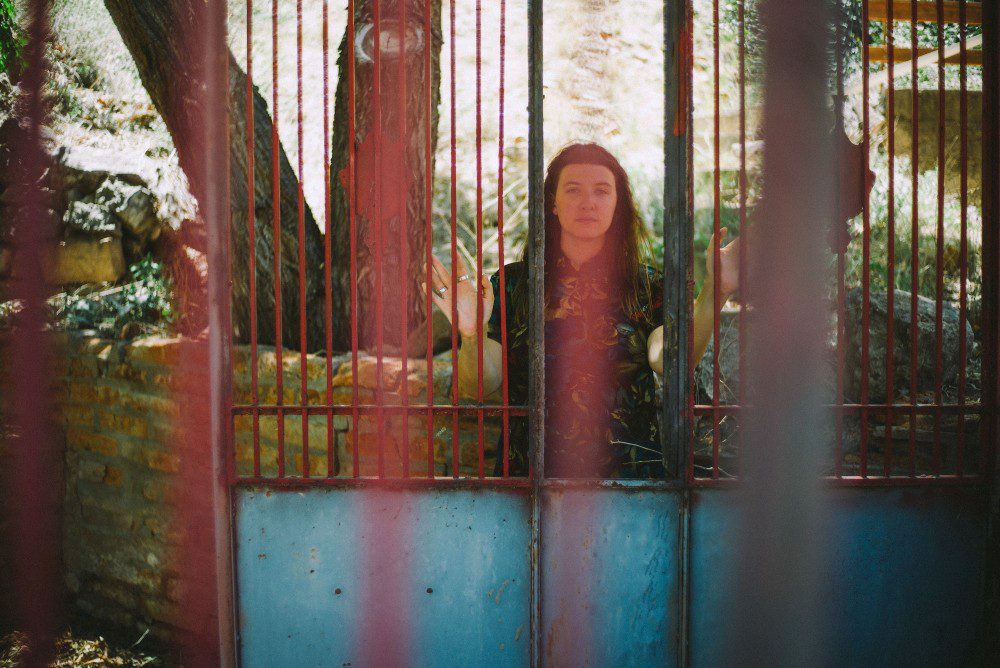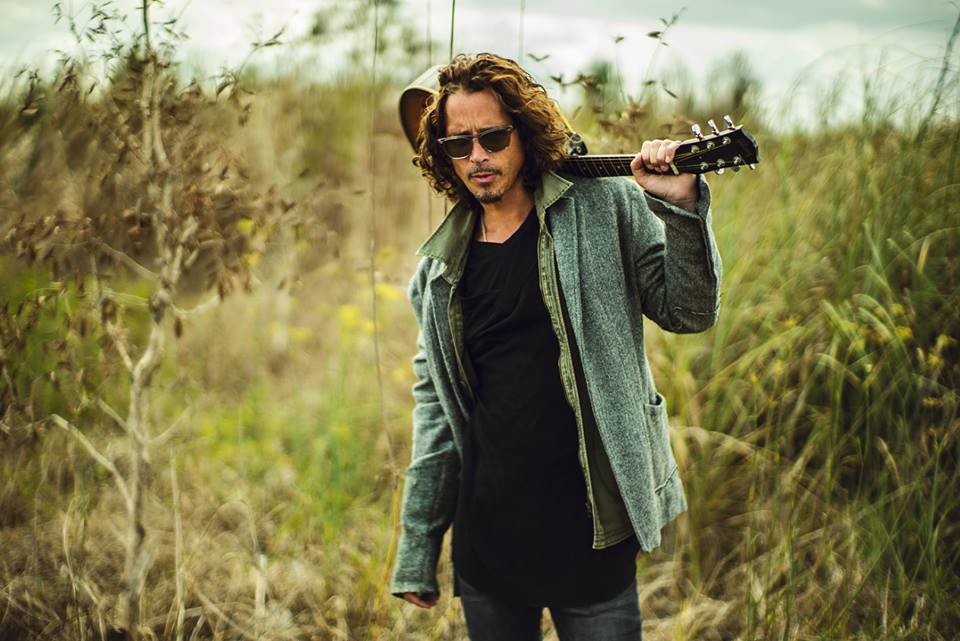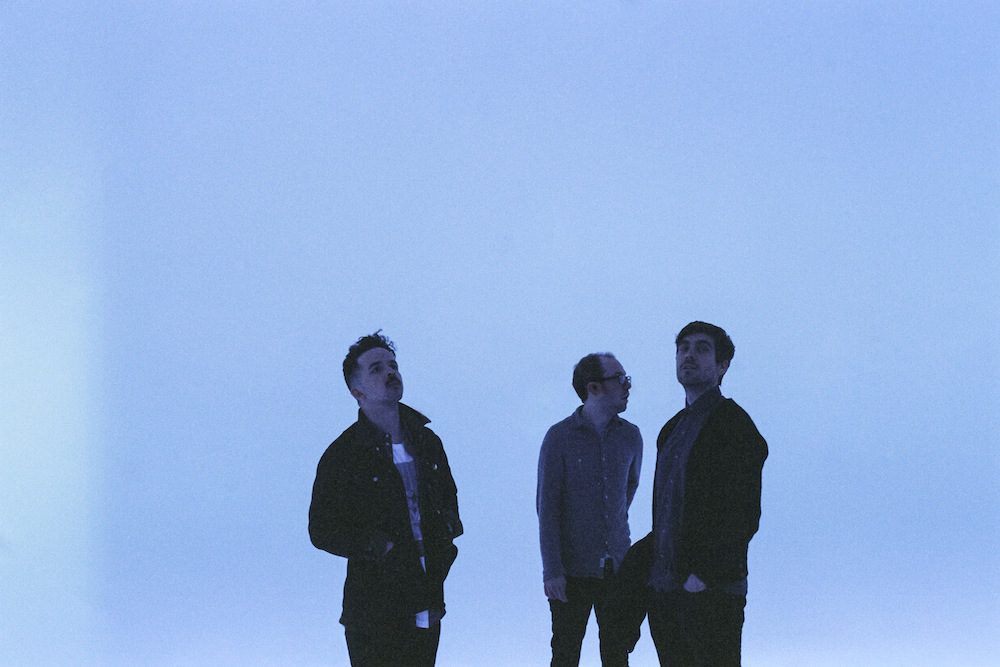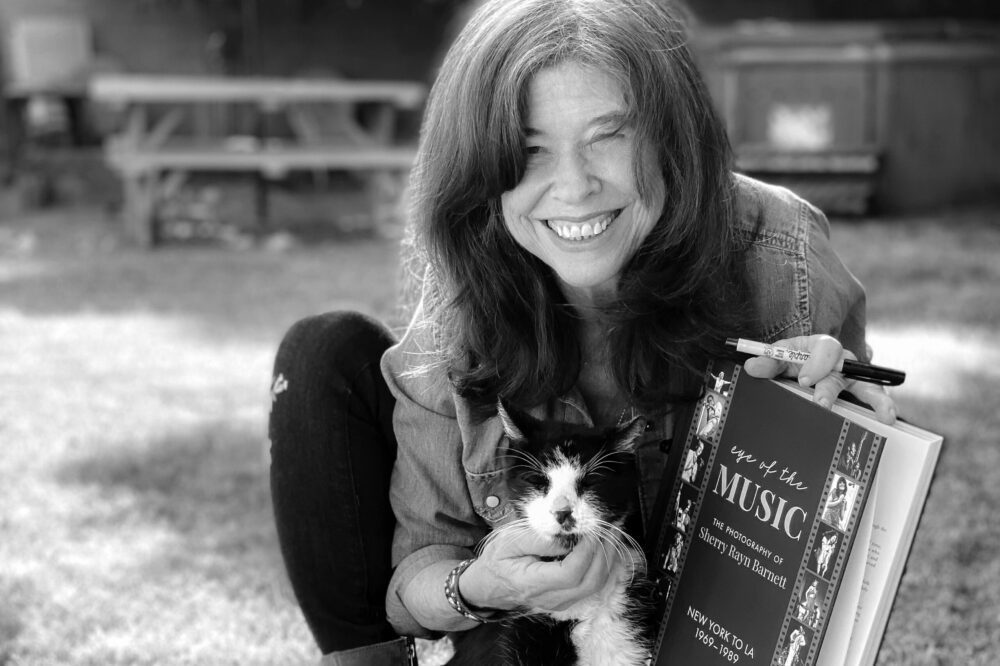
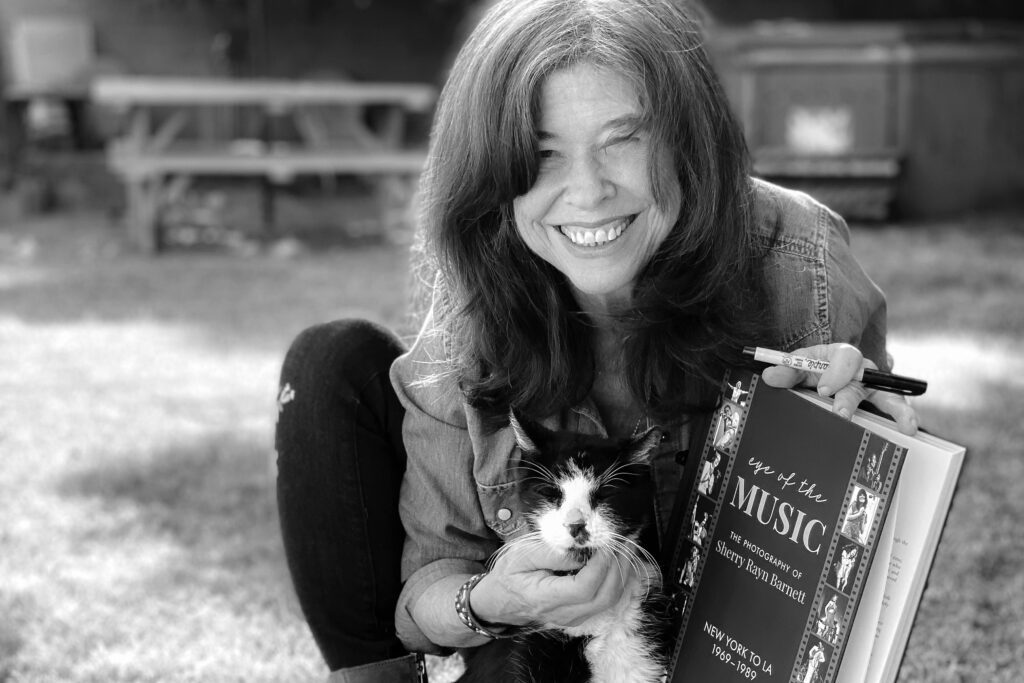
Having spent over half a century working as a photographer, you’re sure to have seen Sherry Rayn Barnett’s work at some point. Maybe on such album covers as Nina Simone’s Let It Be Me, Toni Basil’s Best of Mickey & Other Love Songs, or What’s That I Hear? The Songs of Phil Ochs. Maybe in books like The Bob Dylan Encyclopedia, or the documentary Joni Mitchell: Woman of Heart and Mind. Sherry began taking pictures at the time rock ‘n’ roll was becoming rock, and rock was becoming art, and legendary careers were just getting off the ground. Her new book, Eye of the Music: The Photography of Sherry Rayn Barnett: New York to LA 1969-1989, offers an engrossing look through her personal archives, charting the career development of a professional photographer and the heady musical atmosphere of times.
Ironically, the COVID pandemic gave Sherry the time to complete the project, which had long been in the making. At the beginning of 2020, she was preparing for the release of a new album by her band, Mustangs of the West, set to be followed by a tour. The album, Time, came out as scheduled in March, but the tour ended up getting cancelled. The unexpected downtime allowed Sherry to focus on Eye of the Music and get it published by last December, making 2020 a busy year after all. “The fact that I was able to have an album release, and a book release, during the pandemic — it’s just absolutely amazing,” Sherry says, still in disbelief. “I doubt it will happen again.”
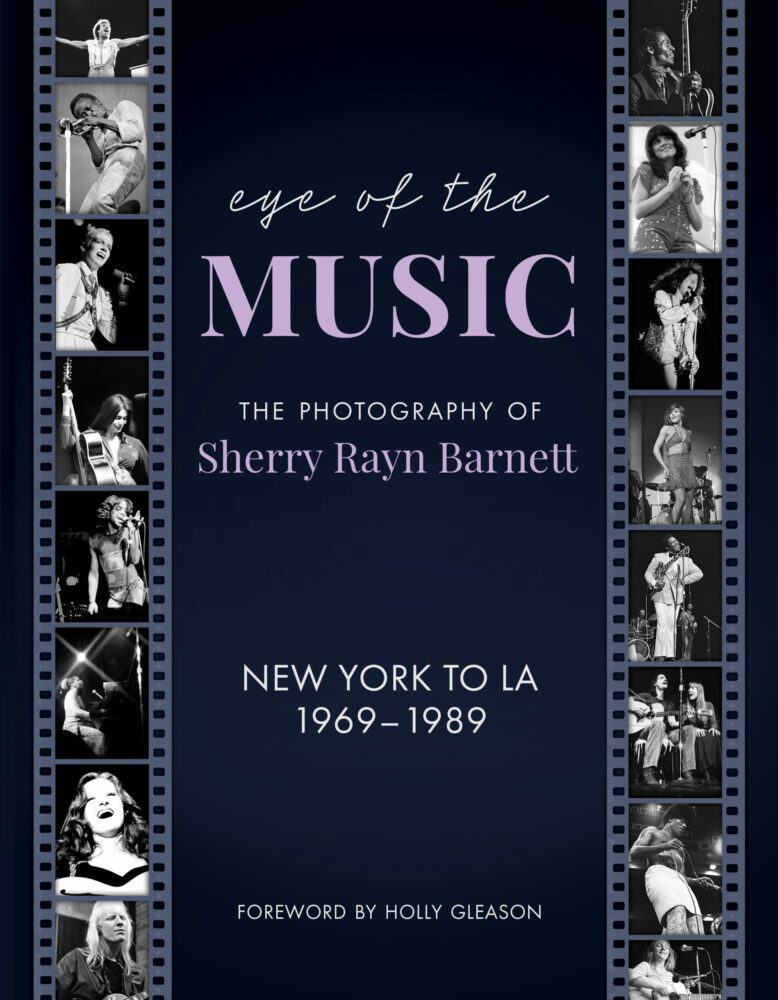
Music and photography were linked at a young age for Sherry. Her mother was an aspiring songwriter, living in Queens, New York, who would take Sherry with her when she went to pitch her songs at the Brill Building, home to numerous music publishers. “We got on the subway, we went to Manhattan, and would go to this building where I would get either a 45 record from the secretaries or an autographed picture of the artist,” Sherry recalls. “Those pictures really stuck in my mind; it was kind of the full spectrum of, here’s the music and here’s the person, or the group, who’s singing it. And I was fascinated by that. And when I got into my teens, it was like, ‘I want to take those pictures. I want to see these artists in person and I want to photograph them, the same way.’”
By then, Sherry was attending the High School of Performing Arts — the “Fame” school — studying classical guitar. But when she realized she had no interest in becoming a solo performer, she began to focus more on her photography. Soon, she was living something of a double life, attending school during the day, and photographing music performers in the evening: a mini-skirted Linda Ronstadt at Town Hall, backed by musicians who would later form the Eagles; Joni Mitchell, John Denver, and Miles Davis at the Schaefer Music Festival in Central Park; Janis Joplin at Forest Hills Tennis Stadium, just two months before her death. And the rise of underground rock publications provided a ready outlet for her work. Her first gig was a plum assignment to shoot Ike and Tina Turner for a short-lived magazine called CORPUS. Sherry rose to the challenge, capturing the two in concert, then giving an up-close-and-personal look at the couple offstage, lounging on their beds at the Chelsea Hotel.
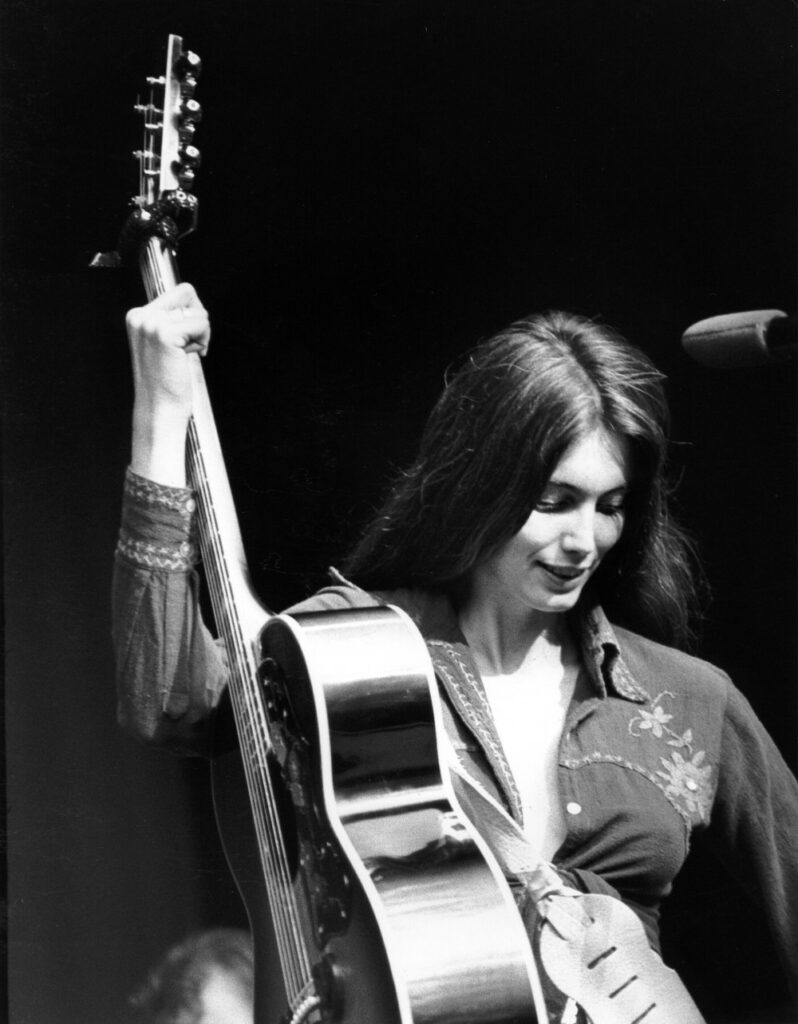
Sherry credits being a self-taught photographer with giving her a sense of freedom. “I think the advantage of being self-taught is that you’re not regimented,” she says. “Thinking photographically, it’s not like you are told ‘This is how you need to look at something’ or ‘This is how you need to compose a shot.’ So for me it was better. On the other hand, the advantage of being schooled in photography is that you can probably breeze through a lot of technical mistakes. I thought that the way to crop a photograph was to cut the negative. Which of course is absolutely ridiculous! I ruined some of my early shots.”
She was also drawn to acts that tended to play smaller venues, enabling her to get the intimacy so evident in her photographs. “I think that most of the guy photographers went to photograph these guy rock bands: the Who, and Zeppelin, and the Rolling Stones,” she says. “And I was more eclectic. I was really drawn to the singer-songwriters that were starting to emerge. I just loved vocal harmony, I loved the songs, I loved the playing. I don’t think as many photographers were driven to go to, say, Bonnie Raitt early on, at the Gaslight Café [in New York], because they didn’t really know of her yet. But I was always listening to stuff that was a little outside the mainstream.
“I’m grateful that I didn’t shoot as many loud rock bands as your typical rock photographer. Looking back, I realize that I’m a music photographer; I’m not as much a rock photographer. If you look through the book, you’ll see, of course, I photograph bands. But the emphasis really is on the individual performers, whether it’s somebody like a Chuck Berry or a Bette Midler. It’s a lot of solo artists, because I was really drawn to the different personalities.”
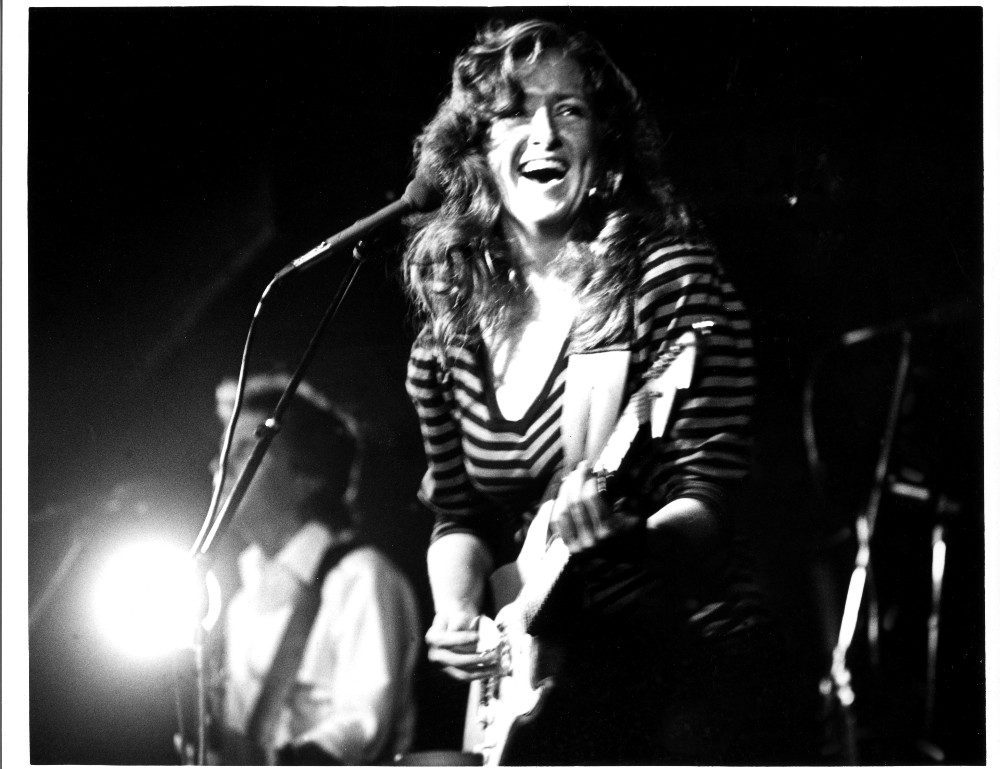
But the most important factor, she says, is the access she was able to secure for what she wanted to photograph. “I just walked up to the front of the stage, and there was no one to stop me,” she says. “I was pretty bold; I just did what I wanted to do. It’s nothing like today. Now there’s this whole glut of photographers at every show, and to get in to shoot is a whole other thing, and then there are all the restrictions of how long you can shoot for; shooting three songs is a lot now. I heard for some artist it was like 30 seconds — it’s crazy!”
In the early 1970s, Sherry relocated to Los Angeles. “Really, because of the music,” she explains. “I just heard all this music I loved coming out of LA, and I had a friend who was a session singer. She said, ‘Hey, if you want to come to LA, I’ll show you around.’ She took me to all these sessions she was doing and set me up in Beachwood Canyon. And I fell in love with the canyons. It was such a far cry from the way I had been living. And I think I was just done with Manhattan; having to carry my gear on the subway all the time, and the crowds in the streets. I loved the openness, at the time, of LA, where you had some greenery, and you could get in your car and be by yourself. You didn’t have to be in a crowd all the time.
“I started going to the Troubadour and the Ash Grove and McCabe’s, and the Bla Bla Café, where Al Jarreau got his start. A lot of great performers were still playing those small to mid-sized clubs, and you could go out and see them and not have to pay a fortune and be hundreds of feet back. It was growing, but it was still at a level that you could experience and capture a performance in a very intimate way. The intimacy of it was really important to me.”
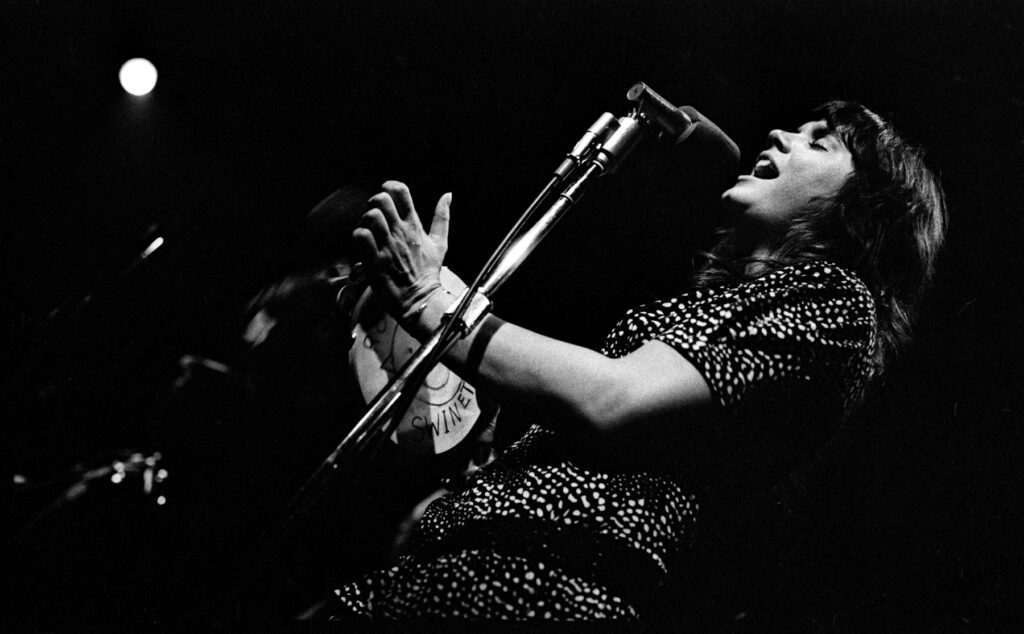
It’s not surprising to find that many of the photos in Eye of the Music were taken in small venues. “I’m sure that was deliberate, but it wasn’t conscious. It was just what I was attracted to. After I was able to afford bigger lenses, I could be further back [in a venue]. But I was really passionate about being up front and center as much as I was allowed to be.” Her picture of Little Richard, at the Felt Forum (the smaller room at Madison Square Garden), is a case in point. Sherry’s positioned right at Richard’s feet, her camera looking up, close enough to capture the beads of sweat on his bare chest. “That was not a telephoto lens, that was right there,” Sherry notes with pride. “He looks like a prizefighter. Looking back, it’s an amazing shot, and I don’t say that from an ego standpoint. It’s just like, wow!”
The majority of photos are live shots, each conveying the excitement of a performance: Bette Midler letting loose, Carly Simon looking particularly joyful. There’s a nattily-attired B.B. King, and Phil Ochs in the gold suit he patterned after the same costume Elvis wore on the cover of 50,000,000 Elvis Fans Can’t Be Wrong. And there’s a rare shot of Karen Carpenter behind a drum set, drums being her original instrument.
“I was always drawn to the live moment and that’s what really connected me to the music,” Sherry says. “It’s really the nature of my work. And when you do a portrait, it’s a whole different element. It’s pretty much staged, with the exception of candid portraits; it’s a whole other environment. I would say 90 percent of great studio photographers are educated; they’ve gone to school for it and are technically excellent. I’ve shot album covers, and I’ve done portrait photography, but I’m never as relaxed, I guess, doing a fabricated shot. I leave great portraiture to the people that really do that well. So yeah, I’ve always been drawn to the live aspect of these performers, because that’s exactly what they are. They’re performers.”
Nonetheless, Eye of the Music does contain some offstage, and even “staged” material. Most notable is the picture Sherry surreptitiously snapped while attending a recording session for Joni Mitchell’s classic album Court and Spark at the A&M Records studio in LA. “There was nobody with cameras. And I could tell this was not going to be a photo shoot day. But I did have my camera, and I did get it out for literally just a handful of quick shots.” Joni is seen playing her guitar, lost in thought, the boom mic looming in the foreground.
There’s also an outtake from a memorable session Sherry did with Nina Simone. Sherry had previously photographed the music legend at the Village Gate in Greenwich Village. In 1987, she was hired to shoot the cover shot for Simone’s Let It Be Me album. “I had a home studio, and I had a piano there. We sat around waiting for Nina for, oh, I think close to four hours before she arrived. And she was not in a good mood. I can’t really say what she said about the makeup person, but it was not very kind. She had said when she called in that she wanted a white sheet, so I had gotten her a white sheet. I gave it to her when she got there, and she literally stood there and disrobed in front of the window, in front of everybody. We all just kind of turned our backs. She completely disrobed and put the white sheet on.
“And you can tell [in the final shot], she’s just bare shouldered. You don’t know what she’s wearing, but she’s wearing a white sheet. And I actually had her autograph an album cover for me while she was there; I didn’t usually do that, but she was just so legendary. It wasn’t the most pleasant shoot, but we got a great, great shot of her that she used up until she finally passed as her promo shot. So that was really complimentary.”
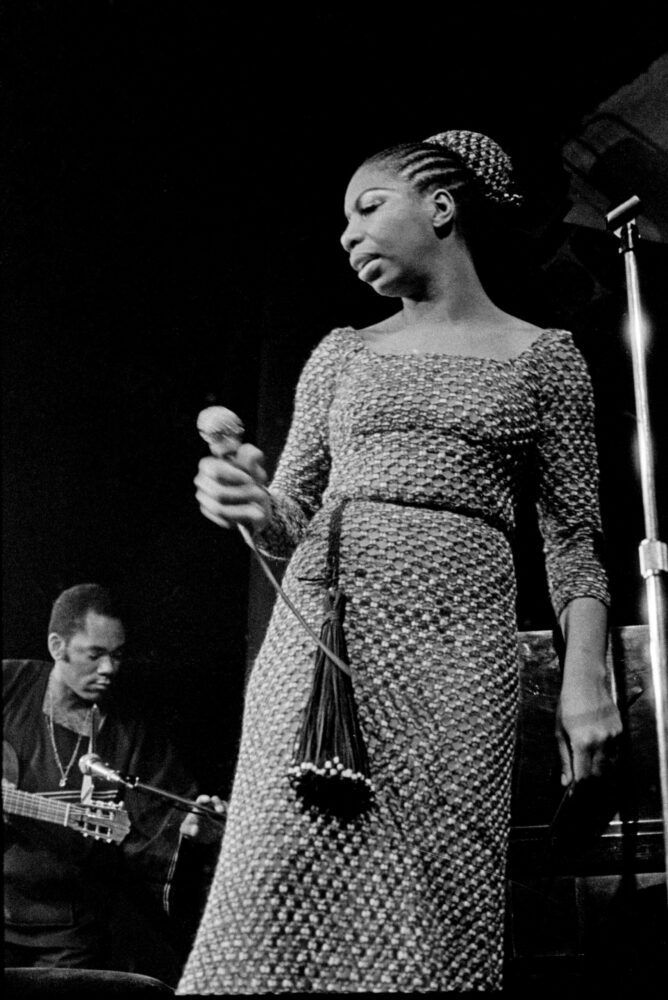
There’s also a spread devoted to the all-female bands Birtha and Fanny, acts Sherry felt never got the acclaim they deserved. It’s made her consider her own role in music history. “I’m paying more attention now, because people have asked me along the way, ‘Hey, have you felt any prejudice as a female photographer?’ or ‘Did you get fewer jobs?’ I never really thought about it. I didn’t bulldoze my way through anything, but I really didn’t let anything stop me if it was accessible to me, if it was a possibility. But looking back — or even looking now, and at a number of the rock galleries and photographers who are really successful, there is such a small percentage [of women] that I’ve actually sat down and gone, okay, you’ve got a hundred rock photographers here, and truly, it’s lucky if there are 10 percent that are women.”
Sherry ended up in an all-female band herself, when she joined the Mustangs on lead guitar in the late 1980s. “I realized I could be in a band and not have all the focus on me,” she says. Sherry had developed a growing appreciation for new country performers like Roseanne Cash, Mary Chapin Carpenter, Dwight Yoakum, and Randy Travis, and the Mustangs became part of LA’s country-rock “cowpunk” scene. “After I joined, they put me onstage with them the next night, which was completely unnerving, because we were opening for Lucinda Williams! So that was my start with the band.”
The Mustangs split in the mid-1990s, and Sherry went back to photography full-time. By 2017, she felt the time was right to put the group back together, reuniting with two other original members and adding two new ones, becoming the Mustangs of the West “because there were so many more bands named ‘the Mustangs.’” Making Time brought Sherry full circle; it was recorded at the site of the same A&M Records complex — now Henson Studios — where she once photographed Joni Mitchell. She also ran into Wendy & Lisa, the duo known for their time in Prince’s band the Revolution, as well as their own work, at the studio. Wendy ended up loaning Sherry one her vintage Fender Mustang guitars to play on the album.
Eye of the Music has photos of a somewhat scrawny 21-year-old Prince at the Roxy, as well as shots after his fame exploded, from the Purple Rain premiere, and Sherry’s book was originally going to cover the years up to 1999 in another nod to the Purple One. “We thought 1999 was a great year,” she says. “It just sounded good, and the Prince connection and everything. But we ended up spending so much time on the ’70s, we barely got to the ’80s!” Sherry spent the ’80s photographing the likes of Go-Go’s, Elvis Costello, k.d. lang, the Eurythmics, Cyndi Lauper, Lionel Richie, and the sole US season of Top of the Pops. But you definitely get the sense that there are more photos, and stories, to share.
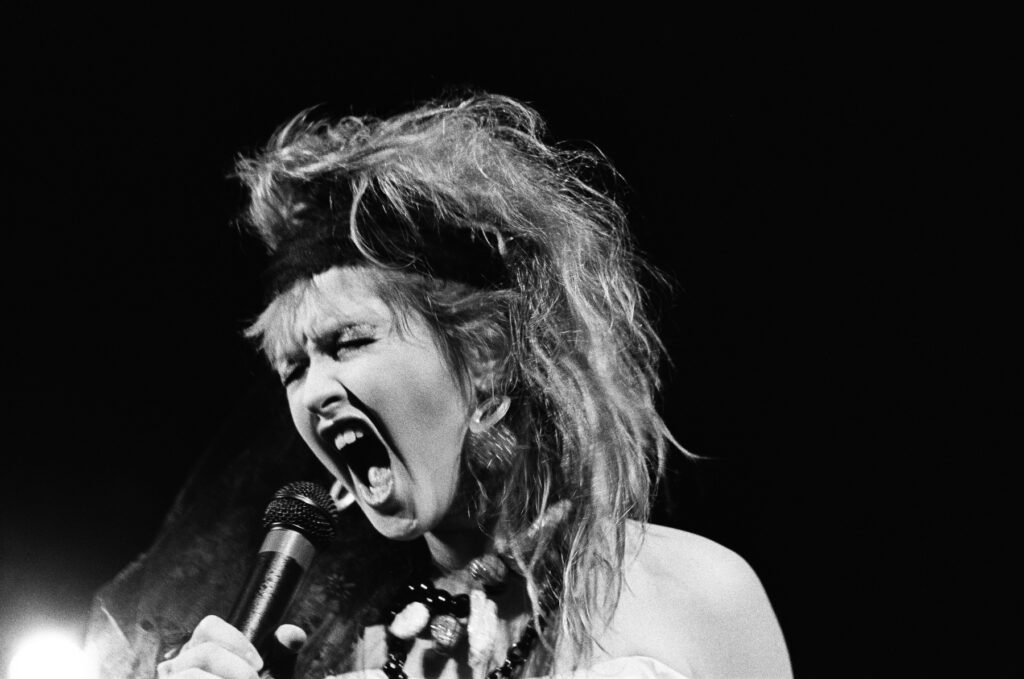
“I’ve been shooting for a very long time. Doing this book, going back, it was almost like telling somebody else’s story, because some of the pictures were taken that long ago. I uncovered things that I had forgotten existed. So revisiting them and revisiting that part of my life was a very interesting process. It’s hard when one picture gets used in a documentary, one picture gets used in a book, one picture gets used in a CD reissue, and there’s no story to tell about that. And I didn’t realize, once the book came out, how people really connected and related to the stories. So I might do a book of the 2000s, because I’ve been shooting another 20 years. Or I’ve also considered doing another book on the same eras that I just covered, but digging a little deeper into each shoot.
“But I’m very grateful to have been in the places where I was at the time. Because I got the unique photos. Because I got the ones that nobody else had.”
Follow Sherry Rayn Barnett on Facebook and Instagram for ongoing updates, and purchase the book via her website.

